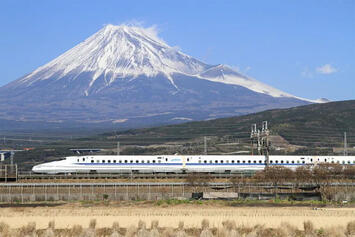
Well, it’s big in Japan.
That is what proponents of California’s high speed rail project say when asked about the whys and wherefores of the system. In other words, if it works somewhere else it will work here.
That argument, though, falls in the face of a rather basic fact: California and Japan are different.
It is true that Japan’s high speed rail system, first begun in 1964, actually makes money – a lot, in fact. The iconic first line, Shinkansen Tokaido, alone carries 90 million people a year and has an operating profit of about $4.4 billion dollars. That does not include capital costs, but teasing that number out after 60 years of operation and the privatization of the route in the late 1980s is extremely difficult – suffice to say the deal has “worked” for the owners.
There are multiple other Shinkansen lines in Japan, most of which also realize an operating profit (the latest expansion to Hokkaido – the very large island north of the Japanese mainland – has proven to be problematic, though.)
Focusing on the Tokaido line – the line typically referred to for comparison - shows a few similarities but many glaring differences. It’s distance is 320 miles, not terribly different from the 390 miles from Los Angeles to San Francisco. Also, it takes two and half hours – again not too dissimilar - and, in a downtown to downtown comparison, is faster and more convenient than flying (though not cheaper – it’s about $100 to fly and about $160 to take the Shinkansen) just like California’s project is supposed to be.
But that’s about it.
First, there is the issue of population. The Tokaido line (with its “Nozomi” train only stopping in the largest cities and hence the fastest) runs from Tokyo to Osaka, which alone have combined populations of 17 million, compared to 11 million for LA (including the county) and San Francisco.
In the cities along the Tokaido route there are 9 million more people; in the space between LA and SF, there are less than 3 million. For comparison, the smallest city on the Tokaido is Shinagawa at 400,000 people; the smallest city on the California system is Gilroy, at 58,000. All told, the average “stop population” between LA and SF is about 250,000 – on the Tokaido/Nozomi is 2,250,000.
It is these concentrations and the economies of scale they allow that drive the success of the Tokaido line - California’s system is simply not in the same league.
The Nozomi train operates 32 1,300-seat trains each way every day; pretty much on the half-hour with fewer overnight, while the two other slower (but still high speed) trains on the same system operate much more frequently and make many more stops.
Note on the following information– when dealing with California High Speed Rail (CHSR) Authority numbers - time or money - it is a good idea to remind oneself that they have never been right before, so really really big grain - meet salt.
The CHSR system will – in its “horizon year” of 2040, operate 105 southbound and 103 northbound trains per day over the system. Southbound, 64 trains will start in San Francisco, 20 in San Jose, and 21 in Merced. Northbound, 42 trains will start in Anaheim, 44 in Los Angeles, and 17 will start in Merced (note – that means 86 trains will pass through LA northbound every day.)
The system will operate 18 hours per day, with six hours designated “peak;” about half of the trains will operate during those six hours, the other half during the 12 “off peak” hours.
That means LA’s Union Station will – during the morning commute – see a train going north about every eight minutes, every day.
Read the rest of this piece at The Point.
Thomas Buckley is the former Mayor of Lake Elsinore and a former newspaper reporter. He is currently the operator of a small communications and planning consultancy and can be reached directly at planbuckley@gmail.com. You can read more of his work at thomas699.substack.com.
Image: courtesy The Point.












